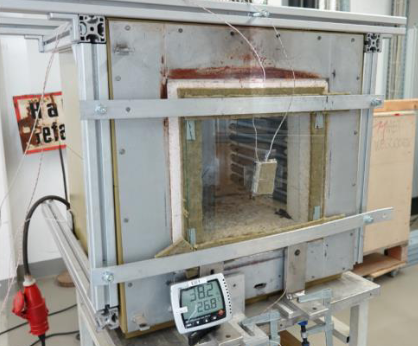Temperature Distribution and Stress Relaxation in Glass under High Temperature Exposition

Abstract
High temperatures, especially non-uniform temperatures distributions, on glass structures can induce stress relaxation, viscous material behaviour and glass fracture. Temperature exposure of toughened glass to 290°C and above can result in a partial reduction in strength of the glass component and, in case of fracture, a change in the fracture pattern due to stress relaxation. To achieve a better understanding of the heat transfer in monolithic and laminated glass, test series in an electric furnace on different glass specimens were carried out. The specimens were made of monolithic and laminated soda-lime silicate glass in different components. The test set-up was chosen in a way to create an inhomogeneous temperature distribution from the heat source through the glass in order to create a more realistic load case than an assumption of homogeneity. The results of the experimental examinations were used to develop a first numerical model that was used to visualise details (e.g. temperature and stress distribution). In addition, the paper presents results of experimental and numerical examinations to the determination of the temperature distribution in different glass components, which leads to stress relaxation during high temperature exposure and affects fracture pattern in thermally toughened glass plates. This will pave the way towards understand of glass structures exposed to heat and fire and, as a vision, will form the fundamentals of a design concept.
Published
Issue
Section
Strength, Stability & Safety
License
Copyright (c) 2024 Maximilian Möckel, Matthias Seel, Gregor Schwind, Michael Engelmann

This work is licensed under a Creative Commons Attribution 4.0 International License.



